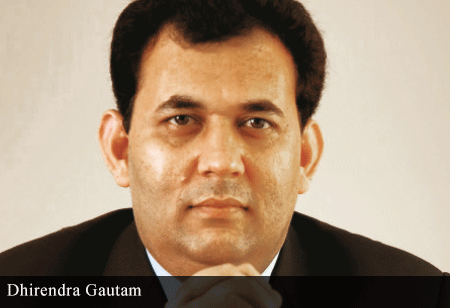How Optimised is your Business...?
By Dhirendra Gautam, CEO & Virtual CFO Partner, Indiba Consultancy Services

Dhirendra Gautam, CEO & Virtual CFO Partner, Indiba Consultancy Services
Today’s success doesn’t guarantee success tomorrow. It is rather the companies willing to redefine who they are today, what they sell and how they operate is going to result in their win or loss in this digital age. According to market research firm IDC, on an average companies lose around 20 to 30 percent in revenue every year due to inefficiencies. And yet, many companies continue to “make do” with their current applications, process and systems even though those may not be the right solutions. Digital transformation of the business is key for the success but it is very important to know whether your digital transformation is in the right direction of the need of your business!
In a recent Profit enhancement opportunity working with a NSE/ BSE listed client when me and my team was at one of the factory site and having a diagnostic session with the company management team, I was surprised to know that the company had moved from a Branded ERP solution to a substandard ERP solution which is still not live and getting implemented since two years and usage is not even 20 percent. Users are frustrated and performance is pathetic. The System has become a Liability to the Company. Many clients I work with (most of them) are lost in process. There’s either too much process, which means the message sent is never the message received, or, not enough process, which is similar to working in the wild vanilla. Within a company its Process are the biggest killer of Morale, Passion and Productivity if not optimised. The impact for businesses using antiquated business process solutions or, even worse or, no solutions at all can be multi-faceted and ultimately damage their bottom line. The two important Points I would like to discuss here is the “Poor System integration” and “Inaccurate Insight”
Poor System Integration
When I asked the question to person responsible for sale in the company “what you do when some customer calls you and asks for some product he requires buying”? The “Answer was, I ask my purchase team...!” With more automation the business process required to be more integrated and intelligent to guarantee success. For example a customer service and Sales team who heavily relies on CRM, inventory management and order tracking solutions, the employees in these departments must be aware of all of these systems if they want to optimize the customer experience. However, without a standardized solution to access these processes they are forced to constantly shift between multi-sources of information, resulting in confusion and gaps in productivity.
Inaccurate Insight
This point is more concern with optimised decision making; The Leaders who lack the most relevant insights at their fingertips are less likely to make smart decisions. Most of the time data is available but leaders may receive inaccessible or erroneously reported information due to a lack of real-time reporting, simply because there was too much process in doing so. If a leader doesn’t have the right information at right times the decision making become very difficult and does not achieve its goal. The overall optimization of a Business can be achieved by creating an Enterprise Model that includes Strategies and Objectives along with a robust enterprise wide system to manage the business operation, controls and measure the KPIs. The KPIs is integrated into the Process definition and optimization efforts and can further assign to a responsibility. A dashboard based monitoring setup to track the actual KPI values to compare against objectives. And when a KPI is found out of range, a simple click mechanism to determine which process is causing the issue and who has the responsibility for addressing the issue.
The overall result is that the decision maker has critical information at hand to prioritize the Business Process Optimization efforts to achieve established goals.




